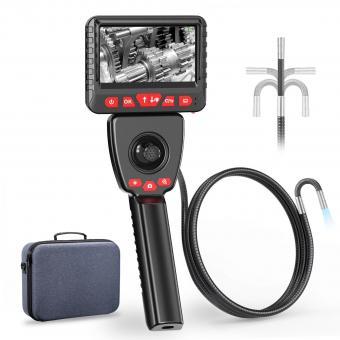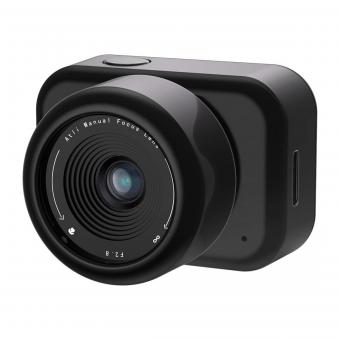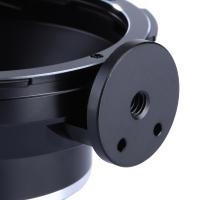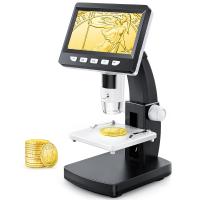Who Uses Microscopes ?
Microscopes are used by a wide range of professionals and researchers in various fields. These include scientists, biologists, chemists, medical professionals, pathologists, forensic experts, geologists, engineers, and educators. Microscopes are essential tools for studying and analyzing microscopic organisms, cells, tissues, and materials. They enable the observation of details that are not visible to the naked eye, allowing for a deeper understanding of the structure, composition, and behavior of the objects being examined.
1、 Scientists and researchers in various fields
Scientists and researchers in various fields use microscopes as essential tools in their work. Microscopes allow them to observe and study objects and organisms at a microscopic level, revealing details that are not visible to the naked eye.
In the field of biology, microscopes are used to study cells, tissues, and organisms. Biologists use microscopes to examine the structure and function of cells, identify and classify different species, and investigate the mechanisms of diseases. Microscopes also play a crucial role in medical research, enabling scientists to study pathogens, develop new drugs, and understand the intricacies of the human body.
Microscopes are also widely used in the field of chemistry. Chemists utilize microscopes to analyze the composition and structure of materials at the atomic and molecular level. This helps them understand the properties and behavior of substances, develop new materials, and improve manufacturing processes.
In the field of materials science, microscopes are used to investigate the structure and properties of various materials, such as metals, polymers, and ceramics. This knowledge is crucial for designing and developing new materials with specific properties, such as strength, conductivity, or flexibility.
Furthermore, microscopes are utilized in fields such as geology, environmental science, and forensics. Geologists use microscopes to study rocks, minerals, and fossils, providing insights into Earth's history and processes. Environmental scientists use microscopes to analyze soil and water samples, identifying pollutants and studying microorganisms. Forensic scientists use microscopes to examine trace evidence, such as fibers, hairs, and fingerprints, aiding in criminal investigations.
In recent years, advancements in microscopy techniques have expanded the applications of microscopes. For example, super-resolution microscopy allows scientists to visualize structures at a resolution beyond the diffraction limit, opening up new possibilities in fields like nanotechnology and cell biology. Additionally, the development of portable and handheld microscopes has made microscopy more accessible in remote or resource-limited areas, enabling field researchers to conduct on-site analysis.
In conclusion, scientists and researchers in various fields rely on microscopes to explore the microscopic world and gain a deeper understanding of the objects and organisms they study. The continuous advancements in microscopy techniques promise to further enhance our ability to observe and analyze the microscopic realm, leading to new discoveries and breakthroughs in science and technology.
2、 Medical professionals and pathologists
Medical professionals and pathologists are the primary users of microscopes in the field of healthcare. Microscopes play a crucial role in their daily work, allowing them to examine and analyze various biological samples at a microscopic level. These professionals use microscopes to diagnose and monitor diseases, study cellular structures, and identify abnormalities in tissues and cells.
Medical professionals, such as doctors and surgeons, use microscopes in various specialties. For example, in pathology, pathologists use microscopes to examine tissue samples obtained from biopsies or surgical procedures. They analyze the samples to identify the presence of cancer cells, infectious agents, or other abnormalities. Microscopes also aid in determining the stage and severity of diseases, which helps guide treatment decisions.
In addition to pathology, microscopes are widely used in other medical fields. For instance, microbiologists use microscopes to study microorganisms, such as bacteria and viruses, to identify and understand infectious diseases. Hematologists use microscopes to examine blood samples and identify blood disorders. Microscopes are also used in fields like dermatology, ophthalmology, and reproductive medicine, among others.
The latest point of view regarding the use of microscopes in healthcare is the integration of digital imaging technology. Digital microscopes allow medical professionals to capture high-resolution images and videos of microscopic samples. These images can be stored, shared, and analyzed electronically, enabling remote consultations, collaboration, and research. Digital microscopy also facilitates the use of artificial intelligence algorithms for automated analysis and diagnosis, potentially improving accuracy and efficiency in healthcare.
In conclusion, medical professionals and pathologists are the primary users of microscopes in healthcare. The latest advancements in digital imaging technology have further enhanced the capabilities of microscopes, enabling remote collaboration and the integration of artificial intelligence for improved diagnostics and research.
3、 Biologists and microbiologists
Biologists and microbiologists are the primary users of microscopes. These scientists rely on microscopes to study and analyze various biological specimens at a microscopic level. Microscopes enable them to observe and understand the intricate structures and functions of cells, tissues, and organisms that are not visible to the naked eye.
Biologists use microscopes to investigate the anatomy and physiology of living organisms. They can examine the cellular components, such as organelles, and study their interactions and processes. Microscopes also allow biologists to observe and analyze the development and growth of organisms, helping them understand the mechanisms behind various biological phenomena.
Microbiologists, on the other hand, focus specifically on microorganisms, including bacteria, viruses, fungi, and protozoa. They use microscopes to identify and classify different types of microorganisms, study their morphology, and analyze their behavior and interactions. Microbiologists also utilize microscopes to investigate the effects of microorganisms on human health, agriculture, and the environment.
In recent years, the use of microscopes has expanded beyond traditional biological research. With advancements in technology, microscopes have become more sophisticated and versatile. They are now used in various interdisciplinary fields, such as nanotechnology, materials science, and forensic science. Microscopes equipped with advanced imaging techniques, such as fluorescence microscopy and electron microscopy, allow scientists to explore and manipulate matter at the nanoscale level.
Furthermore, microscopes have found applications in medical diagnostics and pathology. Pathologists use microscopes to examine tissue samples and identify abnormalities or diseases. Microscopy techniques, such as immunohistochemistry, enable the detection of specific molecules and markers in tissues, aiding in the diagnosis and treatment of various medical conditions.
In conclusion, while biologists and microbiologists remain the primary users of microscopes, the applications of microscopy have expanded to various scientific disciplines. The latest advancements in microscopy technology have opened up new avenues for research and have enhanced our understanding of the microscopic world.
4、 Chemists and material scientists
Chemists and material scientists are among the primary users of microscopes. These professionals rely on microscopes to observe and analyze the structure, composition, and behavior of various substances at the microscopic level. Microscopes enable chemists and material scientists to study the properties and interactions of atoms, molecules, and materials, providing valuable insights into their chemical and physical characteristics.
In the field of chemistry, microscopes are used for a wide range of applications. For instance, chemists use microscopes to examine the crystal structure of compounds, which helps determine their purity and identify any impurities present. Microscopes are also essential for studying the morphology and surface properties of materials, such as polymers and nanoparticles, which are crucial for understanding their behavior and potential applications. Additionally, microscopes are used to investigate chemical reactions and processes occurring at the nanoscale, aiding in the development of new catalysts and materials with enhanced properties.
Material scientists also heavily rely on microscopes to investigate the structure and properties of materials. By using advanced microscopy techniques, they can analyze the composition, crystallography, and defects in materials, enabling them to design and optimize materials for specific applications. Microscopes are particularly valuable in the field of nanotechnology, where scientists manipulate and characterize materials at the nanoscale. They allow for the visualization and manipulation of individual atoms and molecules, facilitating the development of novel materials with unique properties.
Moreover, with the advancements in microscopy technology, such as scanning probe microscopy and electron microscopy, chemists and material scientists can now explore materials and phenomena at unprecedented resolutions. These cutting-edge techniques provide detailed information about the atomic and molecular structure of materials, opening up new avenues for research and innovation.
In conclusion, chemists and material scientists are the primary users of microscopes. These instruments are indispensable tools for studying the structure, composition, and behavior of substances at the microscopic level. With the latest advancements in microscopy technology, these professionals can delve deeper into the nanoscale world, leading to groundbreaking discoveries and advancements in various fields.

































